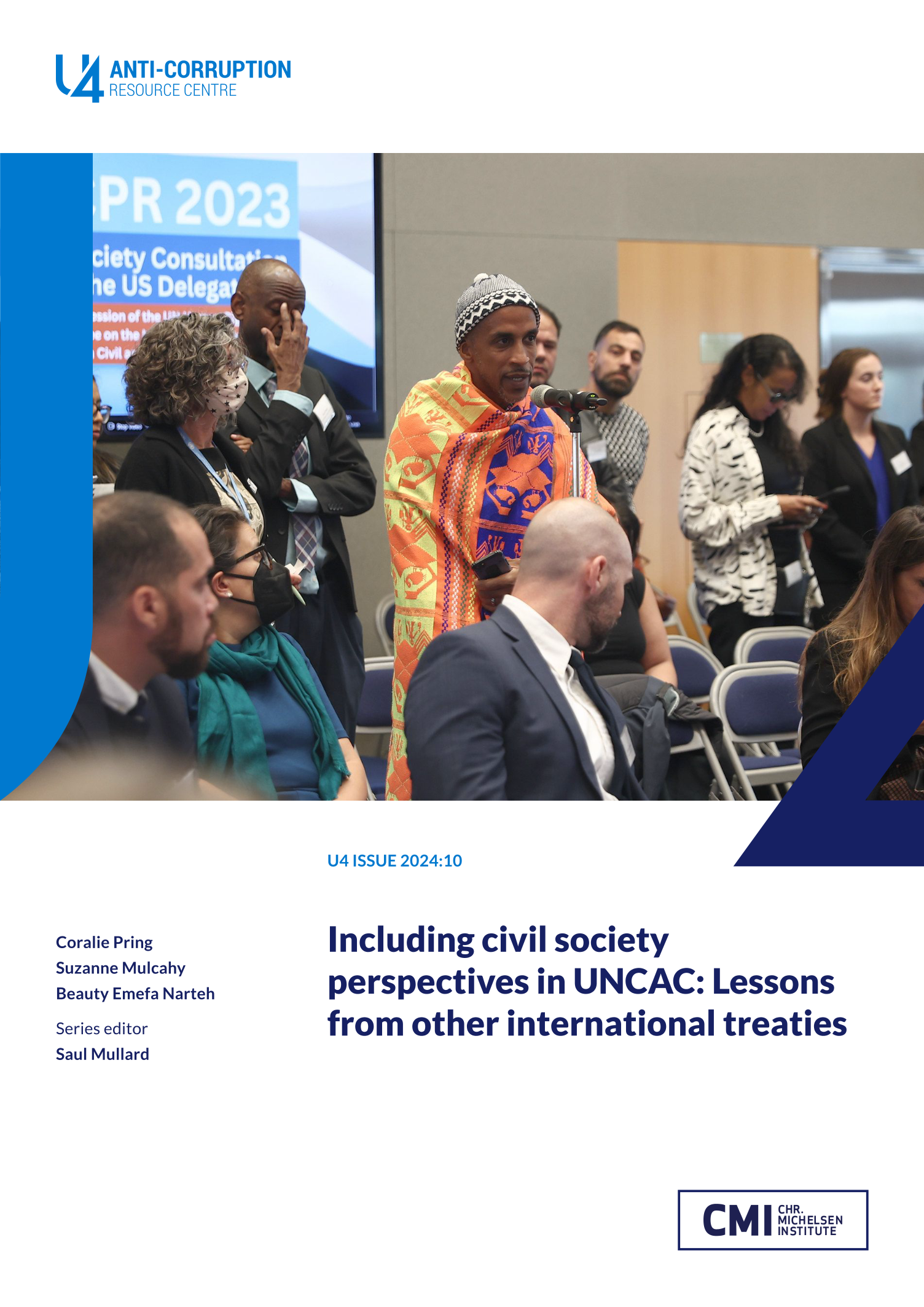Main points
- UNCAC’s second review cycle is coming to an end and discussions have begun about possible adjustments to its Implementation Review Mechanism (IRM). This is an opportune moment to assess the IRM’s strengths and weaknesses and compare it with similar mechanisms to draw lessons for the participation of civil society organisations (CSOs). Now is the time to reflect on the previous review phase and plan for a future with a strengthened IRM.
- The barriers that exclude CSOs from meaningful participation must be lifted. For example, the lack of public information about when and where country reviews take place. States parties are responsible for inviting CSOs to participate in the review process, and it is vital that CSOs at least have access to review timetables so they can proactively request participation. The United Nations Office on Drugs and Crime (UNODC) could easily facilitate this by regularly publishing the review calendar more prominently on their website. There are several examples of similar mechanisms cited in this report that could be used as a template.
- When considering a calendar for the next review phase, the Implementation Review Group (IRG) should set a global schedule and publish it at the beginning of the review cycle, rather than setting individual schedules for each review on a country-by-country basis.
- Much of the work needed to improve the IRM revolves around communication. The simplest measure would be to issue a press release when a review is complete and draw attention to its recommendations. There are other achievable examples to inspire UNODC, such as the Universal Periodic Review, which uses effective communication tools, such as infographics, to show review cycle trends for accepted recommendations, to help with follow-up actions.



